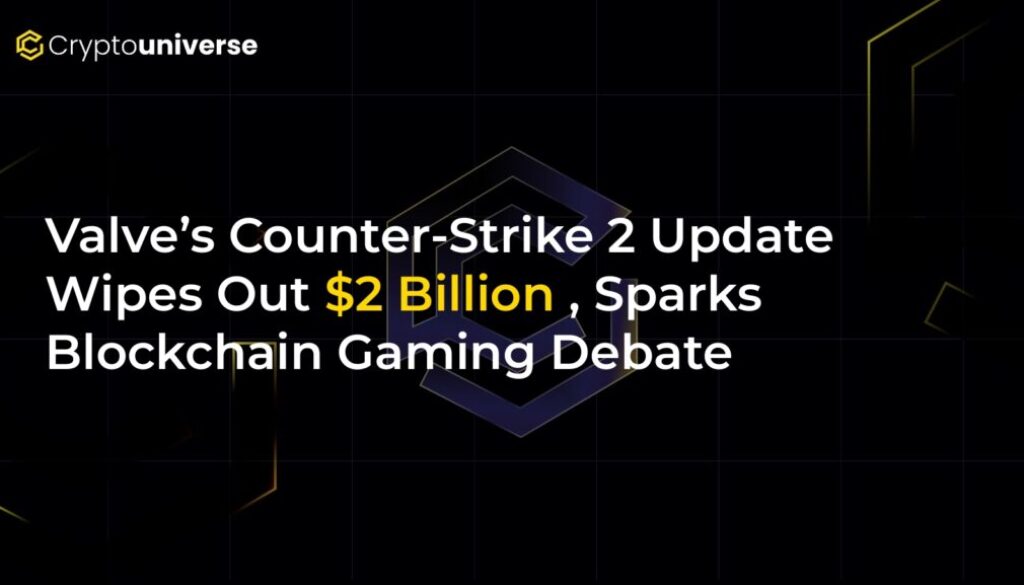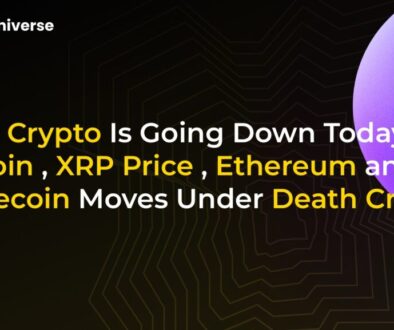Valve’s Counter-Strike 2 Update Wipes Out $2 Billion, Sparks Blockchain Gaming Debate

A Single Update, a $2 Billion Crash
In a move that sent shockwaves through the global gaming community, a single update to Counter-Strike 2 instantly erased nearly $2 billion from its thriving virtual economy. On October 23, 2025, developer Valve pushed a quiet change that upended the game’s delicate ecosystem of digital collectibles, leaving high-value traders devastated and reigniting a fierce debate about the true nature of digital ownership.
The incident serves as a stark reminder of the fragility of centralized digital markets. What was once a $5.8 billion economy, built over years by a dedicated community, proved vulnerable to collapse in a matter of hours, all at the discretion of a single company.
What Exactly Happened? The Crafting Update Explained
The controversial update introduced a new crafting system for the game’s most coveted items: knives and gloves. Previously, these items were exceedingly rare, obtainable only through loot boxes (known as “cases”) with a minuscule 0.26% drop rate or by purchasing them on the Steam Marketplace for thousands, sometimes tens of thousands, of dollars.
The new system fundamentally changed this dynamic. Players can now craft a random knife or pair of gloves by trading in five “Covert” (red-tier) weapon skins. This seemingly simple change democratized access to rare items, but in doing so, it flooded the market with a new supply, cratering the value of existing collections.
Carnage on the Marketplace: A Digital Bloodbath
The aftermath was immediate and brutal. Within 24 hours, the total market capitalization of the CS2 economy plummeted from nearly $6 billion to $4.2 billion. Some reports from Bloomberg suggested the drop was even steeper, with the market cap hitting a low of $3.65 billion—a staggering 39% decline.
The price of individual items went into freefall:
- Premium knives that were valued at $14,000 on Wednesday were selling for half that by Thursday morning.
- One trader reported watching their $2,300 Butterfly Fade knife lose $500 in value in just 10 hours.
- Another saw $1,400 evaporate from their knife’s value in 30 minutes.
Conversely, the Covert skins required for crafting skyrocketed in price. Skins like the AK-47 Nightwish saw their value jump by over 30% as players and bots rushed to capitalize on the new crafting arbitrage opportunity.
The Human Cost: More Than Just Pixels
The update created a deep rift within the community. While casual players celebrated the newfound accessibility of dream items, serious traders and collectors who had invested significant real-world money faced financial ruin.
Professional player Spinx publicly announced his exit from the market, stating, “I sold everything I had. Every Skin I owned is gone. I’m completely out of the CS2 market.”
Others highlighted the potential for severe personal consequences. Streamer FURIOUSSS voiced his concern on social media:
“You guys know that people are probably going to harm themselves cause of this, yet you pushed it out without hesitation, crazy.”
While unverified, reports of personal tragedies among traders in China began to circulate, underscoring the real-world financial and psychological weight these digital assets carried for many.
The Blockchain Debate Reignited
For proponents of Web3 and blockchain gaming, the Valve’s Counter-Strike 2 Update Wipes Out <$2 Billion> event is a textbook example of the dangers of centralized control.
Nokkvi Dan Ellidason, CEO of crypto gaming firm Gaimin, described the CS2 economy as “not a true economy; it’s a company store.” He argued that players were forced to realize their assets are “just a line item in Valve’s private database, a privilege that can be altered at any time.” This sentiment echoes the famous story of a young Vitalik Buterin, who was inspired to create Ethereum after World of Warcraft developer Blizzard nerfed his favorite warlock spell.
Are NFTs the Answer?
The immediate reaction from the crypto world was that this wouldn’t have happened if CS2 items were NFTs (Non-Fungible Tokens). However, the reality is more complex. Martin Kupka of Win Win advisory firm argues that NFTs alone wouldn’t have prevented the crash. “Even if every item were an NFT, the market would have crashed in the same way, because Valve maintains complete control over the items’ features and utility,” he explained.
The real solution, experts suggest, lies in “fully on-chain” games. In such a system, the core game logic—including item scarcity and creation rules—is encoded into immutable smart contracts on a blockchain. Kori Leon, co-founder of Pixelverse, noted, “Smart contracts could have defined clear rules from the start, making any change predictable and transparent.”
Why Did Valve Risk It?
Analysts speculate Valve had several motivations for such a disruptive move. The company takes a hefty 15% cut from every transaction on its Steam Marketplace (a 5% platform fee plus a 10% game-specific fee). The update likely serves to pull trading activity away from unregulated third-party marketplaces and gambling sites, consolidating it back onto Steam.
Furthermore, by devaluing the high-tier items obtained from loot boxes, Valve may be preemptively shielding itself from growing regulatory pressure on game mechanics that are often compared to gambling.
The Real Damage: A Crisis of Confidence
Beyond the financial losses, the most significant damage may be to player trust. Former YouTube gaming executive Ryan Wyatt summarized the issue perfectly: “I think it actually has much less to do with supply shock than it does that [Valve] can, and will, unilaterally make dev decisions that can wipe billions in market cap. It’s more a confidence issue. It’s this today, what tomorrow?”
The market may eventually stabilize, but the precedent has been set. The digital scarcity that gave these items value was revealed to be artificial and subject to change at any moment.
A Hard Lesson in Digital Ownership
The great CS2 market crash of 2025 is a watershed moment for virtual economies. It demonstrates that when digital assets hold billions in real-world value, the question of governance, transparency, and ownership becomes paramount.
For traders who lost fortunes overnight, the lesson is painful: in a centralized world, you don’t truly own your digital assets. For the blockchain gaming industry, this event is the ultimate proof of concept—a powerful, real-world example of the problem they are trying to solve. The future of gaming will be defined by how developers answer the critical question this crash has raised: who really controls your digital life?


